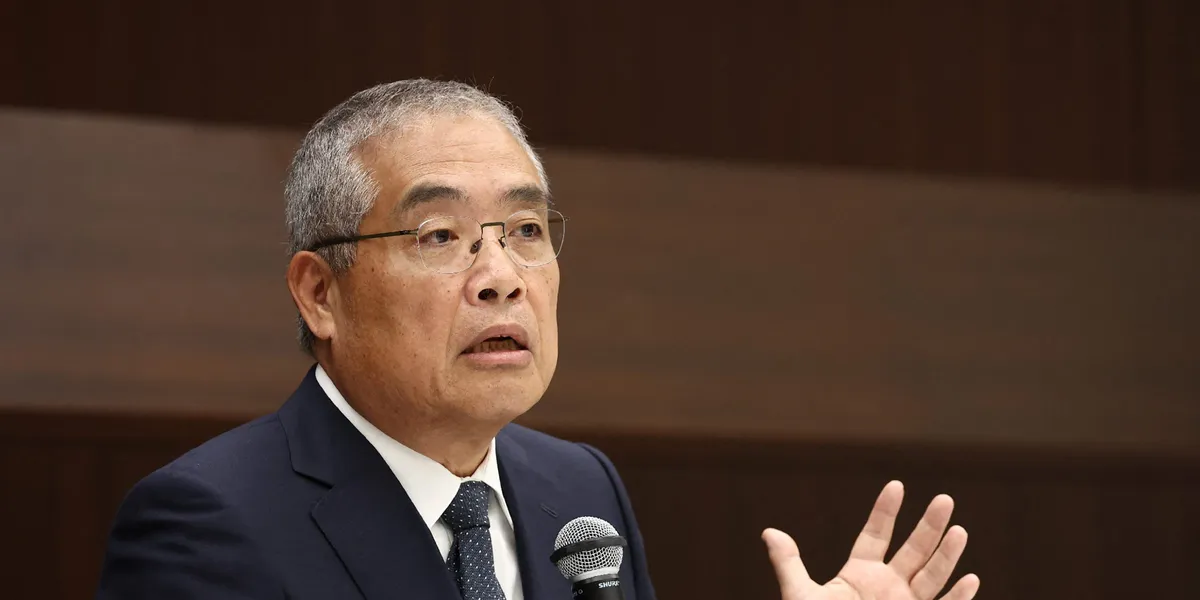If you are of a certain age, you may recall a viral video published (*gasp*) 14 years ago about a particularly resilient mammal called the honey badger. Despite being relatively small, the carnivorous honey badger has few natural predators, thanks to its thick skin, durability, and ability to wriggle free from even the most dangerous of situations. It is, frankly, badass.
The honey badger’s hardiness and its you’ll-never-take-me-alive disposition have inspired athletes, T-shirt schleppers, and motivational speakers. And it’s a pretty fitting mascot for the community solar industry right now.
Solar photovoltaic and wind projects, long derided by the guy in the Oval Office, got the short end of the stick in the Republican budget reconciliation bill, seeing tax credit eligibility phased out and cut off sooner than originally promised by the Inflation Reduction Act (IRA). Those that don’t get a shovel in the dirt ASAP risk losing financing, complicating deals with lenders and power purchase agreements (PPAs) with offtakers. If developers can get approval from the locals to break ground, which is far from a given in some parts of the United States, they’ll have to sort out the implications of back-and-forth tariffs, which are complicating supply chains and driving up construction costs.
Add in complicated foreign entity of concern (FEOC) clauses that endanger tax credit eligibility, and simply put, some power projects no longer pencil out. Accordingly, there has been a rush to the exits, even in strong markets like Texas. E2 counts 16,500 American jobs lost so far this year; more than $22 billion (and counting) has been taken off the table. Enverus Intelligence Research estimates 70% of solar and 43% of wind capacity are not resilient to losing investment and production tax credits.
Despite all of that and more, community solar persists. Small-scale, local photovoltaic projects are cropping up left and right, and slowly, frameworks to support the industry are coming together and moving through state legislatures.
“There’s this broad set of benefits that community solar brings to the table that are – I don’t want to say uncontroversial because everything’s political right now – but tend to have appeal from all different types of stakeholders,” ventured Tom Hunt, the CEO of Pivot Energy, a developer of distributed scale solar and storage projects based in Denver, Colorado.
“In markets across the country, there is bipartisan recognition that community solar can lower energy costs, provide customer choice, and drive local economic growth,” concurred Jeff Cramer, CEO of the Coalition for Community Solar Access (CCSA), a trade association of which Hunt is chairman of the board.
Wood MacKenzie has projected U.S. community solar capacity to surpass 14 gigawatts (GW) by 2029, although the global consultancy admits long-term growth depends largely on state and national policy. There are many reasons why distributed solar projects might be more appealing than their residential or utility-scale brethren, but at the end of the day, they can all be distilled into a straightforward axiom: Time is money.
Go Queue Yourself: The Perks of Not Getting Stuck
One of the primary perks of distributed generation projects is staying out of transmission-level queues, which can delay project timelines tremendously.
“Larger transmission-level queues have very lengthy interconnection processes and are generally crowded across the country, whereas community solar projects follow distribution-level interconnection processes, which are much quicker,” detailed Aaron Halimi, founder and president of Renewable Properties (RP). “In this business, time is money.”
PJM, for example, oversees the largest power grid operator in the United States, and it hasn’t accepted new requests to interconnect since 2022, when the regional transmission organization (RTO) paused its queue to evaluate reforms aimed at accommodating massive spikes in study submissions. PJM predicts its 2025 peak demand will increase by 30 GW by 2030, largely attributable to data center growth in the region. A long line of utility-scale generation projects is prepared to lower capacity prices by increasing competition, but when those projects will come online is a bit of a mystery. Community solar projects, on the other hand, use existing infrastructure to connect to the grid, making them much more nimble.
RP is currently developing and operating in 16 states, with hopes to expand if legislation falls in favor of doing so. Pivot Energy aggregates projects, typically in the 5 megawatt (MW) range, and finances them together into portfolios that are then presented to corporate clients in volumes closer to 100s of MW. Hunt says that allows his company to bring a site online within 18 to 24 months, compared to a typical 3-5 year timeline at the transmission level. Such speed and flexibility provide immediate capacity relief in developing regions experiencing rapid load growth from the diaspora of data centers, electric vehicle (EV) adoption, new manufacturing facilities, or whatever.
Community solar projects are typically cited closer to electric load, which saves money on transmission construction, making the sector attractive to regulators seeking to postpone multi-billion-dollar upgrade costs that inevitably get passed on to consumers. The neighborhoods the projects end up in tend to appreciate them, too.
Small in Scale, Close to Communities
The relatively small size of community solar projects makes them inherently more local, delivering tailored benefits to a specific area that larger utility-scale endeavors simply cannot. That often means developers become fast friends with farmers.
“Landowners are among our most important project partners,” confirmed RP’s Halimi. “When we lease land, it’s a 35+ year relationship, and we have some great testimonials on our website about how we communicate with landowners. From the start, we aim to be transparent and clearly describe the solar development process, deliver on our promises, and address their concerns.”
“Most of our land owners tend to be farmers,” echoed Pivot’s Hunt. “They may have 25-30 acres that they’re not utilizing. It’s maybe less productive, or they just don’t want to farm as much acreage right then. They can then get revenue on that, keep it in the family as land that they still control, which will eventually get decommissioned and returned to them in its natural state. And that’s just a really appealing thing for those landowners and thus for a lot of the communities involved.”


With a footprint often limited to a couple of dozen acres rather than the hundreds or thousands encompassed by the sprawl of utility-scale farms, a community solar installation doesn’t dominate the landscape. Small scale allows for customization, too.
While citing its 9.1 MW Slayton Settlement Projects in New York, Renewable Properties got word from the locals that siting the arrays on the landowner’s old dairy farm would change the character of the land and the surrounding agricultural community. To address their concerns, Halimi’s team committed to creating an agrivoltaics project and hired the area’s sheep farmers to manage the project’s ground cover.
“The sheep have just arrived, and we’ll soon be adding beehives for honey cultivation,” beamed Halimi. “In addition, the steady lease income is enabling the landowner to maintain ownership and keep the land in the family. This is a big one, as many farmers are struggling throughout the country and have turned to solar as a means to keep their farms in their family for generations to come.”
Pivot Energy recently completed a project in Weld County, Colorado, a community rich in oil and gas infrastructure. Residents had very specific desires to keep land owned by local farmers, ensuring that water rights remain within the community as much as possible. Pivot partnered with local rancher Tom Brown, who Hunt reports is now expanding his flock because of the stable business agrivoltaic practices now provide.
Positive Policy Percolating
While federal support for some types of renewable energy projects is evidently waning, supportive community solar policies are steadily spreading through state legislatures, and roadblocks that once stood in the way of progress are being removed.
After years of fighting against it, Georgia Power is among the latest to agree to work “in good faith” to enable a path forward for the Solar for All program by modifying its customer-sited solar-plus-storage pilot. Florida has also introduced a bill to better tap into the benefits of community solar.
“Clean, affordable energy should be within reach for everyone—especially in Florida, the Sunshine State. Unfortunately, nearly half of all households and businesses can’t install rooftop solar because they rent, share buildings, or can’t afford the upfront costs,” lamented U.S. Representative Kathy Castor. “That’s where community solar comes in. It allows neighbors to share the benefits of nearby solar projects—saving them money on their electric bills without needing solar panels on their own roof.”
“This bill helps expand these initiatives, especially for working families,” Castor added. “It supports states and local governments, creates jobs, and helps cut harmful pollution. By boosting access to shared solar energy and investing in storage, each community solar project creates $14 million in local economic investment and over 90 jobs.”
Tireless pressure from communities and advocacy organizations prompted Minnesota lawmakers to repeal language from SB 2855 and its House companion, protecting Minnesota’s Community Solar Garden program. According to supporters, the program is poised to deliver billions in economic benefits, lowering energy costs for all subscribers and expanding affordable access for low-to-moderate-income residents.
“This is a major win,” surveyed Vote Solar’s Midwest regional director, Patty O’Keefe. “During a time when state-level action is crucial, it is a major win to see that Minnesota lawmakers side with communities and the clean energy advocates to keep the Community Solar Garden program intact.”
Recent growth has been further accelerated by robust markets in New York, Maine, and Illinois, which each broke annual capacity records last year and accounted for 83% of national volumes. Minnesota is the next largest market.
“Here in California, we’re optimistic about AB 1260, which would specifically direct the CPUC to ensure that community solar-plus-storage projects are fairly compensated,” shared RP’s Halimi, who notes that the Midwest is really heating up.
“Wisconsin and Missouri are drafting bills, and Montana looks even more promising. The Pennsylvania House of Representatives just passed HG 504, which would establish a community energy program in the state,” he continued. “We’re working as much as we can to support CCSA and their community solar advocacy efforts in these states.”


Additional recent community solar progress includes:
- American Legislative Exchange Council (ALEC): Sponsored by conservative county commissioner Lori Saine, conservative legislative member organization ALEC unanimously passed a resolution that supports community solar and agrivoltaics permitting for farmers
- Virginia: Governor Glenn Youngkin signed SB 253 and HB 106 into law. expanding shared solar access by 150 MW for Dominion Energy customers and establishing a new 50 MW program in Appalachian Power territory.
- Colorado: Governor Jared Polis inked SB 24-207, a bill that will modernize the state’s community solar program and enable a new dispatchable distributed generation program.
- New Mexico: The state’s Public Regulation Commission expanded the state’s community solar program by 300 MW of new capacity.
- Alaska: The Republican Legislature and Governor passed SB 52 to create a new third-party community solar program in the state. This marks the first super-majority Republican state to pass enabling legislation for community solar.
- Massachusetts: The state passed a climate bill that streamlined local permitting for community solar projects, instituted net crediting, and reformed interconnection, enabling 800 MW of distributed generation.
The Road Ahead
In order for community solar to really achieve liftoff velocity, the investment tax credit (ITC) for photovoltaic projects probably needed to stay in place.
“The ITC [was] absolutely critical to the solar industry but thereby also to the entire electricity sector,” Hunt told Factor This. Pivot Energy was among a chorus lobbying hard to make the case for keeping ITC eligibility in place, as was Renewable Properties, which pushed for a more sensible wind-down in Washington.
Despite losing out on the chance to cash in on future tax incentives, many small-scale solar developers believe a steady pace of development will continue. The sheer amount of power needed to feed AI demands it, and whether The Powers That Be like it or not, solar is the most cost-effective and fastest-to-market generation solution available. Well-capitalized companies will keep building. Lenders will still invest. But picking the right partners for projects is more important than ever.
Halimi projects tariffs will likely stoke inflation and slow economic growth, creating challenging conditions for the broader economy, but the United States is insatiably thirsty for electricity, and solar is primed to handle some of the quenching.
“Even if we have a recession, the demand for kWhs in the U.S. is going to keep the underlying fundamentals for the energy markets in a good place for developers,” RP’s founder predicts. “Tariffs may make markets more volatile, but I don’t see that volatility impacting project-level investing (tax equity, debt, or sponsor equity). Tariff uncertainty generally leads investors to a flight to quality. The U.S. infrastructure market is dominated by renewable energy projects, and that is as high-quality as it gets.”
Hunt says it’s mostly business as usual at Pivot, since projects have long investment cycles, there is a chance to safe harbor some tax credit eligibility once construction begins.
“We’re operating assuming existing law stays in place but not being blind to potential changes,” offered Hunt. “You try to build some resiliency into developing high-return projects that may be able to withstand a hit.”
It’s safe to say that all community solar companies operating in the U.S. would like to see more federal support. They’d also prefer the tariff seesaw stabilize soon and would appreciate a few more state-level legislators who recognize the value in distributed energy.
But if none of that comes to pass? Honey badger don’t care.









